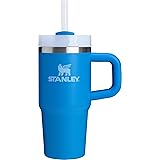Abstract
RNA base editing represents a promising alternative to genome editing. Recent approaches harness the endogenous RNA-editing enzyme adenosine deaminase acting on RNA (ADAR) to circumvent problems caused by ectopic expression of engineered editing enzymes, but suffer from sequence restriction, lack of efficiency and bystander editing. Here we present in silico-optimized CLUSTER guide RNAs that bind their target messenger RNAs in a multivalent fashion, achieve editing with high precision and efficiency and enable targeting of sequences that were not accessible using previous gRNA designs. CLUSTER gRNAs can be genetically encoded and delivered using viruses, and are active in a wide range of cell lines. In cell culture, CLUSTER gRNAs achieve on-target editing of endogenous transcripts with yields of up to 45% without bystander editing. In vivo, CLUSTER gRNAs delivered to mouse liver by hydrodynamic tail vein injection edited reporter constructs at rates of up to 10%. The CLUSTER approach opens avenues for drug development in the field of RNA base editing.
This is a preview of subscription content
Access options
Subscribe to Journal
Get full journal access for 1 year
92,52 €
only 7,71 € per issue
All prices are NET prices.
VAT will be added later in the checkout.
Tax calculation will be finalised during checkout.
Buy article
Get time limited or full article access on ReadCube.
$32.00
All prices are NET prices.
Data availability
Transcriptome-wide RNA-seq data are accessible via the NCBI GEO database with accession code GSE184244. The RADAR database (http://RNAedit.com) was used as reference to assess the editing homeostasis. The dbSNP database version 135 (http://www.ncbi.nlm.nih.gov/SNP/) was used to discriminate human SNPs from RNA editing events. NGS artefacts caused by the LEAPER gRNA treatment were confirmed within transcriptome-wide RNA-seq data from Qu et al.13 (NCBI Sequence Read Archive database, accession code PRJNA544353).
Code availability
A conceptual description of the RCF tool used to generate CLUSTER gRNAs is provided in Supplementary Fig. 1. The full code is available upon request. The compiled tool is available online under: https://github.com/recruitment-cluster-finder/rcf/releases.
References
- 1.
Rees, H. A. & Liu, D. R. Base editing: precision chemistry on the genome and transcriptome of living cells. Nat. Rev. Genet. 19, 770–788 (2018).
- 2.
Stafforst, T. & Schneider, M. F. An RNA-deaminase conjugate selectively repairs point mutations. Angew. Chem. Int. Ed. Engl. 51, 11166–11169 (2012).
- 3.
Montiel-Gonzalez, M. F. et al. Correction of mutations within the cystic fibrosis transmembrane conductance regulator by site-directed RNA editing. Proc. Natl Acad. Sci. USA 110, 18285–18290 (2013).
- 4.
Cox, D. B. T. et al. RNA editing with CRISPR-Cas13. Science 358, 1019–1027 (2017).
- 5.
Abudayyeh, O. O. et al. A cytosine deaminase for programmable single-base RNA editing. Science 365, 382–386 (2019).
- 6.
Vogel, P. & Stafforst, T. Critical review on engineering deaminases for site-directed RNA editing. Curr. Opin. Biotechnol. 55, 74–80 (2018).
- 7.
Vallecillo-Viejo, I. C. et al., Abundant off-target edits from site-directed RNA editing can be reduced by nuclear localization of the editing enzyme. RNA Biol. 15, 104–114 (2017).
- 8.
Vogel, P. et al. Efficient and precise editing of endogenous transcripts with SNAP-tagged ADARs. Nat. Methods 15, 535–538 (2018).
- 9.
Grunewald, J. et al. Transcriptome-wide off-target RNA editing induced by CRISPR-guided DNA base editors. Nature 569, 433–437 (2019).
- 10.
Kim, D. et al. Genome-wide target specificity of CRISPR RNA-guided adenine base editors. Nat. Biotechnol. 37, 430–435 (2019).
- 11.
Katrekar, D. et al.. In vivo RNA editing of point mutations via RNA-guided adenosine deaminases. Nat. Methods 16, 239–242 (2019).
- 12.
Merkle, T. et al. Precise RNA editing by recruiting endogenous ADARs with antisense oligonucleotides. Nat. Biotechnol. 37, 133–138 (2019).
- 13.
Qu, L. et al. Programmable RNA editing by recruiting endogenous ADAR using engineered RNAs. Nat. Biotechnol. 37, 1059–1069 (2019).
- 14.
Nishikura, K. Functions and regulation of RNA editing by ADAR deaminases. Annu. Rev. Biochem. 79, 321–349 (2010).
- 15.
Wettengel, J. et al. Harnessing human ADAR2 for RNA repair – recoding a PINK1 mutation rescues mitophagy. Nucleic Acids Res. 45, 2797–2808 (2017).
- 16.
Bennett, C. F. et al. Pharmacology of antisense drugs. Annu. Rev. Pharmacol. Toxicol. 57, 81–105 (2017).
- 17.
Heep, M. et al. Applying human ADAR1p110 and ADAR1p150 for site-directed RNA editing-G/C substitution stabilizes guideRNAs against editing. Genes (Basel) 8, 34 (2017).
- 18.
Tan, M. H. et al. Dynamic landscape and regulation of RNA editing in mammals. Nature 550, 249–254 (2017).
- 19.
Lundstrom, K. & Boulikas, T. Viral vectors in gene therapy: technology development and clinical trials. Technol. Cancer Res. Treat. 2, 471–486 (2003).
- 20.
Conrad, N. K. The emerging role of triple helices in RNA biology. Wiley Interdiscip. Rev. RNA 5, 15–29 (2014).
- 21.
Tomatsu, S. et al. Mutations and polymorphisms in GUSB gene in mucopolysaccharidosis VII (Sly Syndrome). Hum. Mutat. 30, 511–519 (2009).
- 22.
BasuRay, S. et al. Rab7 mutants associated with Charcot–Marie–Tooth disease cause delayed growth factor receptor transport and altered endosomal and nuclear signaling. J. Biol. Chem. 288, 1135–1149 (2013).
- 23.
Vogel, P., Hanswillemenke, A. & Stafforst, T. Switching protein localization by site-directed RNA editing under control of light. ACS Synth. Biol. 6, 1642–1649 (2017).
- 24.
McCaffrey, A. P. et al. RNA interference in adult mice. Nature 418, 38–39 (2002).
- 25.
Vabret, N., Bhardwaj, N. & Greenbaum, B. D. Sequence-specific sensing of nucleic acids. Trends Immunol. 38, 53–65 (2017).
- 26.
Wang, D., Tai, P. W. L. & Gao, G. Adeno-associated virus vector as a platform for gene therapy delivery. Nat. Rev. Drug Discov. 18, 358–378 (2019).
- 27.
Lorenz, R. et al. ViennaRNA Package 2.0. Algorithms Mol. Biol. 6, 26 (2011).
- 28.
Wang, Y., Zhu, W. & Levy, D. E. Nuclear and cytoplasmic mRNA quantification by SYBR green based real-time RT-PCR. Methods 39, 356–362 (2006).
- 29.
Schmittgen, T. D. & Livak, K. J. Analyzing real-time PCR data by the comparative C(T) method. Nat. Protoc. 3, 1101–1108 (2008).
- 30.
Merkle, T. & Stafforst, T. New frontiers for site-directed RNA editing: harnessing endogenous ADARs. Methods Mol. Biol. 2181, 331–349 (2021).
- 31.
Ramaswami, G. et al. Accurate identification of human Alu and non-Alu RNA editing sites. Nat. Methods 9, 579–581 (2012).
- 32.
Ramaswami, G. et al. Identifying RNA editing sites using RNA sequencing data alone. Nat. Methods 10, 128–132 (2013).
- 33.
Dobin, A. et al. STAR: ultrafast universal RNA-seq aligner. Bioinformatics 29, 15–21 (2013).
- 34.
Li, H. et al. The Sequence Alignment/Map format and SAMtools. Bioinformatics 25, 2078–2079 (2009).
- 35.
McKenna, A. et al. The Genome Analysis Toolkit: a MapReduce framework for analyzing next-generation DNA sequencing data. Genome Res. 20, 1297–1303 (2010).
- 36.
Kent, W. J. BLAT–the BLAST-like alignment tool. Genome Res. 12, 656–664 (2002).
- 37.
Wang, K., Li, M. & Hakonarson, H. ANNOVAR: functional annotation of genetic variants from high-throughput sequencing data. Nucleic Acids Res. 38, e164 (2010).
- 38.
Ramaswami, G. & Li, J. B. RADAR: a rigorously annotated database of A-to-I RNA editing. Nucleic Acids Res. 42, D109–D113 (2014).
- 39.
Li, B. & Dewey, C. N. RSEM: accurate transcript quantification from RNA-Seq data with or without a reference genome. BMC Bioinformatics 12, 323 (2011).
- 40.
Love, M. I., Huber, W. & Anders, S. Moderated estimation of fold change and dispersion for RNA-seq data with DESeq2. Genome Biol. 15, 550 (2014).
Acknowledgements
We thank Deutsche Forschungsgemeinschaft (DFG, German Research Foundation) (nos. STA 1053/3-2, STA 1053/7-1, STA 1053/10-1 and STA 1053/11-1 to T.S. and nos. FOR2314 – 267467939, SFB-TR209 – 314905040 and SFB-TR240 to L.Z.); the Gottfried Wilhelm Leibniz Program (to L.Z.); DFG, under Germany’s excellence strategy (no. EXC 2180 – 390900677, Image Guided and Functionally Instructed Tumor Therapies, to L.Z. and T.-W.K.); and the Federal Ministry of Education and Research and Baden-Württemberg Ministry of Science as part of the Excellence Strategy of the German Federal and State Governments, with an intramural innovation grant (nos. IG-Reauts-2019-05 (to P.R.) and IG-RNA-Edit (to J.W.)). We thank the International Rett Syndrome Foundation (grant no. 3806 to T.S.). Further funding was provided by the European Research Council (‘CholangioConcept’ to L.Z. and T.-W.K.) and the German Center for Translational Cancer Research (to L.Z. and T.-W.K.). We thank the German National Academy of Sciences Leopoldina (grant no. LPDS 2019-06 to P.V.).
Ethics declarations
Competing interestsTS, JW, PR, LSP, NL, PV and JBL hold patents on site-directed RNA editing. TS, JW, PR and NW are inventors of a filed patent based on the work published here. PV, JBL and TS are cofounders and shareholders of AIRNA Bio.
TS, JW, PR, LSP, NL, PV and JBL hold patents on site-directed RNA editing. TS, JW, PR and NW are inventors of a filed patent based on the work published here. PV, JBL and TS are cofounders and shareholders of AIRNA Bio.
Additional information
Publisher’s note Springer Nature remains neutral with regard to jurisdictional claims in published maps and institutional affiliations.
Extended data
Extended Data Fig. 1 Raw firefly- and renilla-luciferase RLU values of the dual-luciferase reporter system applied to different cell-lines via adenoviral transduction.
The dual-luciferase reporter system is explained in Supplementary Fig.
2. The translation settings are explained in the methods section. This figure contains the raw data from Fig. 1h. Data are shown as the mean ± sd of N=5 biological replicates.
Extended Data Fig. 2 Avoidance of misfolding of the guide RNA is important for editing. In this experiment the detrimental effects of strong secondary Structures within the antisense part of a guide RNA were highlighted by comparing a set of CLUSTER guide RNAs in a dual-luciferase assay performed in HeLa cells. If a section of an antisense part within a gRNA is sequestered by another section of the same antisense part via backfolding, we call this ‘masking’. Masking reduces the contact surface of the gRNA with the target mRNA. To highlight the problem and its effect on editing, a reference gRNA with 3xRS was compared to three further guide RNAs which contain additional sequences (masking RS, mRS) that step-wise increase the level of masking. For example, mRS#4 masks RS#3 by forming a perfect RNA duplex, inducing a strong secondary structure into the antisense part of the CLUSTER guide RNA. In the most extreme example (containing mRS#4-6), all three RS (#1-3) are masked leaving only the specificity domain for target binding. Accordingly, editing yields drop with increasing masking, highlighting that avoidance of secondary structure is important for the in-silico selection of CLUSTER guide RNAs. The respective folded guide RNA structures are shown, as predicted with the Nupack tool (JN Zadeh, et al. J Comput Chem 32, 170-173 (2011)), demonstrating that our in-silico approach generates CLUSTER guide RNA with a perfectly folded ADAR domain (R/G motif) but with very little secondary structure in the specificity domain and recruitment sequences. Data are shown as the mean ± sd of N=5 biological replicates.
Additional information
Publisher’s note Springer Nature remains neutral with regard to jurisdictional claims in published maps and institutional affiliations.
Extended data
Extended Data Fig. 1 Raw firefly- and renilla-luciferase RLU values of the dual-luciferase reporter system applied to different cell-lines via adenoviral transduction.
The dual-luciferase reporter system is explained in Supplementary Fig.
2. The translation settings are explained in the methods section. This figure contains the raw data from Fig. 1h. Data are shown as the mean ± sd of N=5 biological replicates.
In this experiment the detrimental effects of strong secondary Structures within the antisense part of a guide RNA were highlighted by comparing a set of CLUSTER guide RNAs in a dual-luciferase assay performed in HeLa cells. If a section of an antisense part within a gRNA is sequestered by another section of the same antisense part via backfolding, we call this ‘masking’. Masking reduces the contact surface of the gRNA with the target mRNA. To highlight the problem and its effect on editing, a reference gRNA with 3xRS was compared to three further guide RNAs which contain additional sequences (masking RS, mRS) that step-wise increase the level of masking. For example, mRS#4 masks RS#3 by forming a perfect RNA duplex, inducing a strong secondary structure into the antisense part of the CLUSTER guide RNA. In the most extreme example (containing mRS#4-6), all three RS (#1-3) are masked leaving only the specificity domain for target binding. Accordingly, editing yields drop with increasing masking, highlighting that avoidance of secondary structure is important for the in-silico selection of CLUSTER guide RNAs. The respective folded guide RNA structures are shown, as predicted with the Nupack tool (JN Zadeh, et al. J Comput Chem 32, 170-173 (2011)), demonstrating that our in-silico approach generates CLUSTER guide RNA with a perfectly folded ADAR domain (R/G motif) but with very little secondary structure in the specificity domain and recruitment sequences. Data are shown as the mean ± sd of N=5 biological replicates.
A set of 3xRS CLUSTER guide RNAs differing only in the length (0-10 nt) of the adenosine linkers between their recruitment sequences (RS) were compared in a dual-luciferase assay performed in HeLa cells. the data was normalized to the standard 3xA linker gRNA, which showed the highest editing yield. Data are shown as the mean ± s.d. of N = 5 biological replicates.
Extended Data Fig. 4 The recruitment sequences (RS) and the specificity domain (SD) can be arranged with certain flexibility.
The components of the antisense part of a CLUSTER guide RNA targeting the dual luciferase reporter in HeLa cells were newly arranged, starting from the conventional #6-#5-#4-SD design. Notably, some designs, for example #4-SD-#3-#2 gave comparably good editing yields, even though the SD is placed within the cluster of recruitment sequences. Importantly, the latter design allows to include the nucleotides space 3´ of the targeted adenosine (for example binding sites #3, #2, #1) for the binding of the CLUSTER guide RNA. Data are shown as the mean ± s.d. of N = 5 biological replicates.
Extended Data Fig. 5 Benchmark of CLUSTER vs. LEAPER guide RNAs targeting the BMPR2 W298X amber mutation.
A CLUSTER guide RNA containing nine recruitment sequences (RS#1-9) was compared to a 111 nt LEAPER guide RNA for targeting the said mutation delivered as a cDNA into HeLa cells. Although the on-target editing yield was similar, the LEAPER guide RNA showed widespread (≥14 sites) and severe (11-51% yield) bystander off-target events, while such off-target events are barely detectable for the CLUSTER guide RNA. Exemplary Sanger sequencing reads covering the complete binding sites of both guide RNAs are shown. Off-target events are highlighted by red arrows. The dataset in the benchmark table shows the mean ± s.d. of N = 3 biological replicates.
Extended Data Fig. 6 Heat-map listing the off-target events induced by RNA editing with CLUSTER- and LEAPER-guide RNAs determined by next generation sequencing.
This list shows the subset of off-target editing events at ‘unknown’ sites that have been detected by the pipeline searching for significantly differentially edited sites in at least one sample when cells were treated either with the CLUSTER or the LEAPER guide RNA and compared to the non-targeting control guide RNA (NT gRNA). Sites were assigned ‘unknown’ when they were not listed in the RADAR database. Nonsynonymous editing was only detected for a single site, HTATSF1 (S742G). Mapping analysis detected sites for potential off-target binding of the RAB7A guide RNAs to CTNNAL1, HTATSF1, and ZNF740. The detected RAB7A sites represent the fraction of bystander editing sites close to the on-target site that met the significance and cut-off criteria of the pipeline. Data are representing the mean ± s.d. of N = 2 NGS replicates.
Extended Data Fig. 7 Displaying major differences in bystander editing around the on-target site as determined by next generation sequencing.
NGS reads mapped around the on-target site of RAB7A obtained from the editing with either a CLUSTER (a) or a LEAPER (b) guide RNA were displayed with the integrative genomics viewer (Robinson, J. T., et al. (2011). ‘Integrative genomics viewer.’ Nat Biotechnol 29(1): 24-26.). The analysis clearly shows the high precision of the CLUSTER approach and the massive bystander editing with the LEAPER guide RNA. On-target (centred bar) and Off-target A > G events are indicated by ochre (guanosine) squares. The very few detected bystander edits of the CLUSTER guide RNA are highlighted with two circles in panel (a). Red (thymidine), green (adenosine) and blue (cytidine) squares indicate single nucleotide mismatches not caused by RNA editing. The displayed area shows the full 111 nt binding region of the LEAPER gRNA that also includes the full 20 nt targeting sequence of the CLUSTER gRNA. Data derive from NGS replicate #1 for both the CLUSTER and the LEAPER guide RNA treatment.
Extended Data Fig. 8 Gene expression changes in HEK293FT cells after treatment with CLUSTER- or LEAPER guide RNAs.
(a) and (b) The volcano plots show the DESeq2 gene expression after CLUSTER or LEAPER guide RNA treatment relative to the non-targeting guide RNA (NT gRNA) treatment. Positive log2 fold change values indicate upregulated expression for the CLUSTER or LEAPER guide RNA treatment, respectively. Out of the ≈ 11.000 genes (TPM ≥ 2), only very few genes were detected as significantly differently expressed (padj threshold (c) The potential effect of guide RNA treatments (LEAPER versus CLUSTER versus non-targeting control guide RNA) on ADAR expression was estimated from the TPM values. No notable difference in ADAR expression between the three different treatments was detectable. We provide N = 2 data points in panel (c) representing the two respective NGS replicates, which have been analyzed independently.
Extended Data Fig. 9 Editing did not affect the RAB7A mRNA exon usage.
For both, the CLUSTER and the LEAPER guide RNA-treated samples of our NGS dataset, the exon usage of the RAB7A target mRNA was evaluated and compared to the samples treated with the non-targeting guide RNA control (NT gRNA). In both cases (CLUSTER and LEAPER), no significant difference (padj 1) in exon usage compared to the control was detectable. Each exon bin displayed in this figure shows the mean exon usage as determined by the DEXSeq method (Anders, S., et al. (2012). ‘Detecting differential usage of exons from RNA-seq data.’ Genome Res 22(10): 2008-2017) from two independent NGS replicates.
Extended Data Fig. 10 NGS data processing to remove artefacts caused by the LEAPER treatment.
For the LEAPER guide RNA NGS samples, we observed an abnormally high coverage around the RAB7A target region that corresponds to the binding area of the LEAPER guide RNA (111 nt). We found that such reads originated by the LEAPER guide RNA itself and were falsely aligned to this region, leading to this abnormal coverage pattern. To remove such reads, we applied a procedure (as described in detail in the Methods section) to the LEAPER and all other NGS samples. Here, the top tracks show the unprocessed bam files, visualized by the Integrative Genomics Viewer (IGV), for the LEAPER and CLUSTER guide RNA samples of NGS replicate #1, respectively. The middle tracks resulted from the first processing step that removed PCR duplicates in the 3’UTR of RAB7A with the rmdup command in samtools. The bottom tracks show the final bam files after all described processing steps were performed. These files were then used for the downstream analyses (see Methods section). When revisiting the NGS raw data from the original publication about LEAPER guide RNAs, we found the same phenomenon there (Qu et al., Nat Biotechnol, 2019).
Supplementary information
About this article
Cite this article
Reautschnig, P., Wahn, N., Wettengel, J. et al. CLUSTER guide RNAs enable precise and efficient RNA editing with endogenous ADAR enzymes in vivo. Nat Biotechnol (2022). https://doi.org/10.1038/s41587-021-01105-0
Received:
Accepted:
Published:
DOI: https://doi.org/10.1038/s41587-021-01105-0
Note: This article have been indexed to our site. We do not claim legitimacy, ownership or copyright of any of the content above. To see the article at original source Click Here













